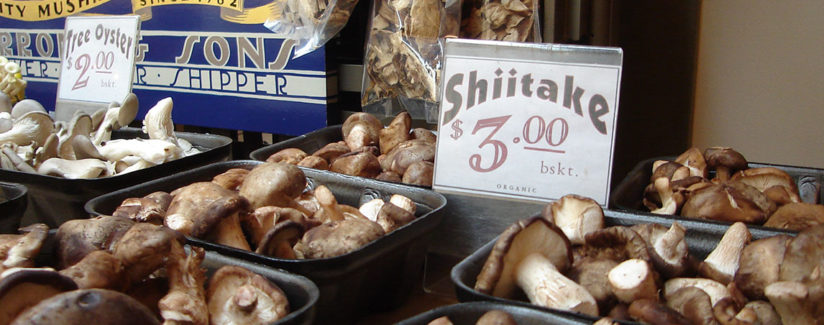
The Fungus Among Us
A mushroom is a mushroom, right? Turns out, there is more to this fungi than meets the eye.
Alice Henneman, MS, RD, Extension Educator of Nutrition, Food Safety, and Cooking at the University of Nebraska-Lincoln, recently answered a question about whether mushrooms are a vegetable in a Best Food Facts article and today she gave us some info about different types of mushrooms and tips for enjoying this nutritious morsel.
Alice Henneman:
The Mushroom Council cites eight common varieties or types of edible mushrooms found in retail locations. Here is a summary of some of the main characteristics for each. Most varieties of mushrooms cited below will taste best if they are cooked.
- White Button mushrooms account for about 90 percent of all the mushrooms eaten in the United States. They have a fairly mild flavor and can be used in a variety of dishes. Eat them raw or cooked.
- Crimini mushrooms, sometimes called “baby bellas or browns,” are similar in appearance to white button mushrooms except they have a light-tan to rich-brown cap and have a firmer texture. They have a deep earthy flavor and pair especially well with beef, wild game and vegetables and are cooked when added to foods.
- Portabella mushrooms are a larger relative of criminis and measure up to six inches in diameter. They have a hearty taste and texture and are served cooked. Grilled portabella mushrooms are often served as an alternative to meat on a bun.
- Maitake mushrooms are sometimes referred to as “Hen of the Woods” as they look somewhat like a ruffled chicken. They have a rich, woodsy taste and are usually sautéed and served as part of main or side dishes or in soups.
- Shitake mushrooms are tan to dark brown and have an umbrella-shaped cap. They taste best cooked and add a meaty taste and texture to foods.
- Enoki mushrooms are light in color with long, spindly stems topped by small button-shaped caps. They have a mild flavor and crunchy texture and are often served raw in salads or tossed into soups.
- Oyster mushrooms are named because of their resemblance to an oyster shell, not because of their flavor. They have a delicate flavor and are often served in soups, stews and sauces.
- Beech mushrooms usually grow in clusters of about 20 two- to three-inch stems and caps about the size of a nickel or quarter. They have a delicate flavor, and to maintain their texture are often added at the last minute to soups, stews or sauces.
What about eating wild mushrooms?
Alice Henneman:
The National Capitol Poison Center recommends leaving mushroom foraging to the experts. It can be difficult to differentiate between a safe and a poisonous mushroom. The center warns, “Cooking doesn’t make a poisonous mushroom safe. In fact, you can be poisoned by breathing in the cooking fumes from some poisonous mushrooms.” For more information on mushroom safety, visit thePoison Center.
And… remember: There are old mushroom hunters, and there are bold mushroom hunters. There are no old, bold mushroom hunters!
How should mushrooms be cleaned?
Alice Henneman:
You’ll often read to avoid using water to clean mushrooms as it will make them soggy. However, when Cook’s Illustrated experimented with cleaning mushrooms with water, they found mushrooms absorbed very little water. TheAcademy of Nutrition and Dietetics and Registered Dietitian Nutritionist Bethany Thayer recommend: “Brush them off with your finger then rinse and pat dry with a paper towel. Do not soak them.”
Think of this phrase: When The Kitchn interviewed a mushroom farmer for an article, the farmer said: “Mushrooms need a shower, not a bath.”
We know mushrooms taste good, but what about nutrition? Best Food Facts registered dietitian Sarah Downs explains.
Sarah Downs:
The taste, look and textures of the different varieties of mushrooms all vary greatly, yet when it comes to nutrition there are not many significant differences. As a whole, mushrooms are low in calories and provide many important nutrients like selenium, potassium, riboflavin, niacin and vitamin D, to name a few. While mushrooms are often grouped with vegetables and they provide many of the nutritional attributes of produce, they also provide some of the nutrients found in meat, beans and grains!
Image “mushroom store” by John Kannenberg is licensed under CC BY NC-ND 2.0.



























